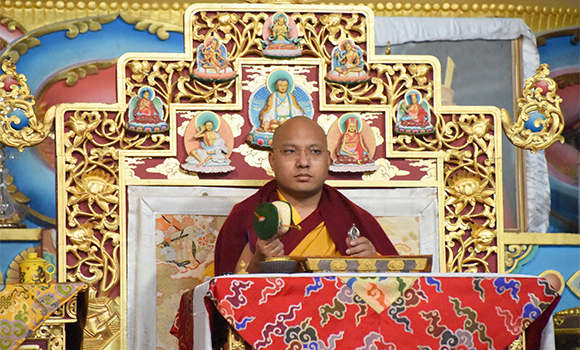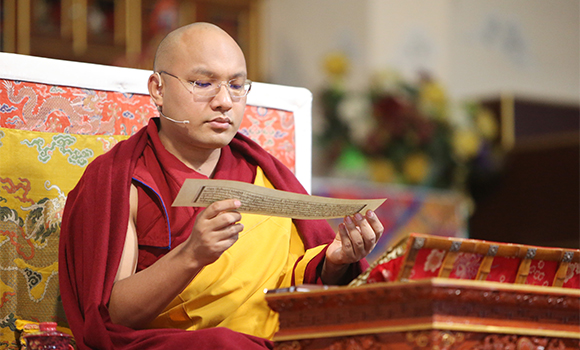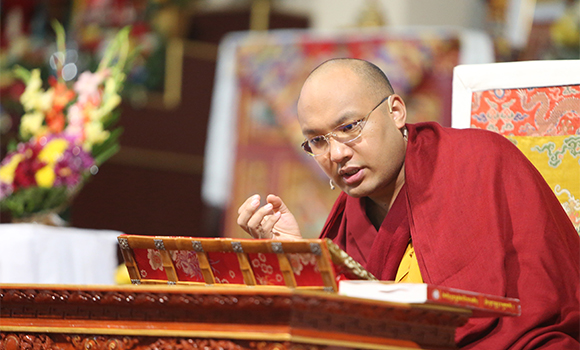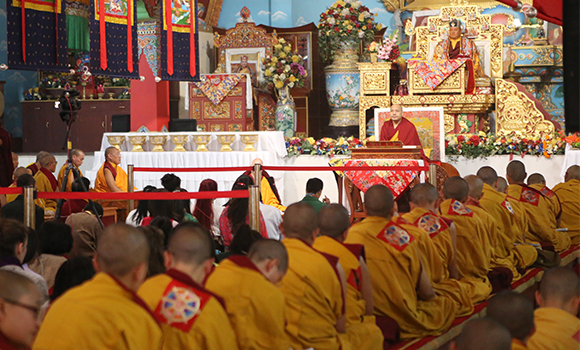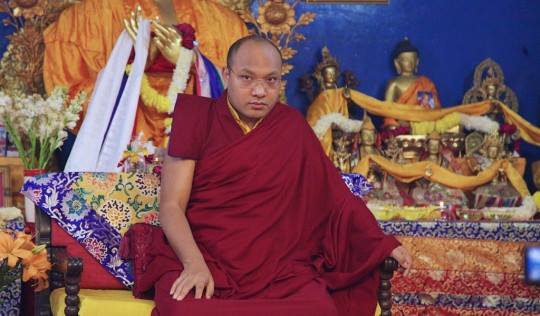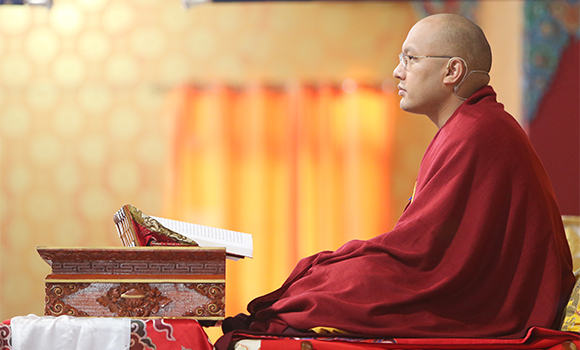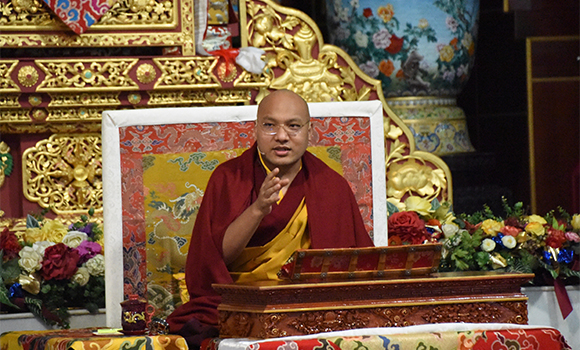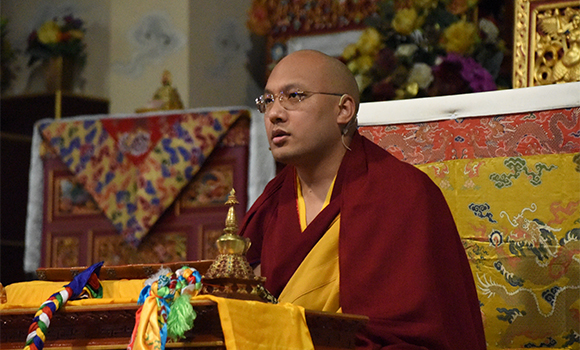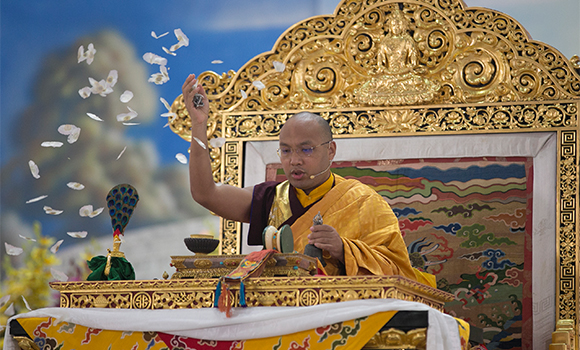 Reviving the Karmapa’s Traditions: The Empowerment and Practice of the Three Roots Combined
Reviving the Karmapa’s Traditions: The Empowerment and Practice of the Three Roots Combined
7-8 February, 2016 – Monlam Pavilion,
The vast altar of the Pavilion was transformed again for the empowerment of the Three Roots Combined. In the center was placed the great throne covered in brilliant gold over ornate carvings: on the back panel, a radiant Tsepakme (Amitayus, Continue reading
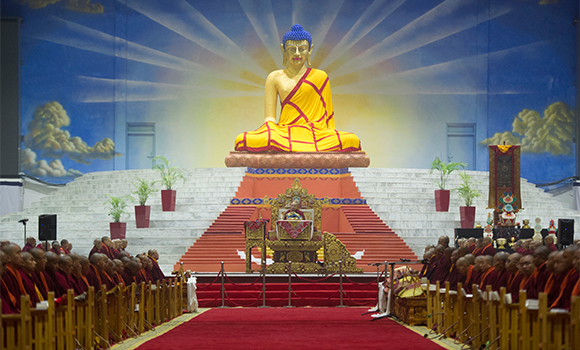 Four-Armed Mahakala: Protector of the Marpa Kagyu
Four-Armed Mahakala: Protector of the Marpa Kagyu Renewing Hope for Many, the Gyalwang Karmapa Concludes the Third Arya Kshema Winter Dharma Gathering
Renewing Hope for Many, the Gyalwang Karmapa Concludes the Third Arya Kshema Winter Dharma Gathering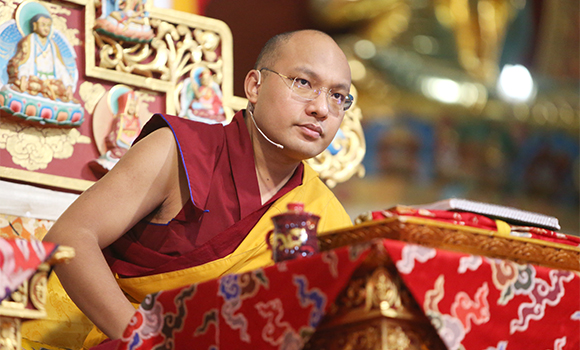 Cultivating the Delight of Rejoicing and the Freedom from Prejudice
Cultivating the Delight of Rejoicing and the Freedom from Prejudice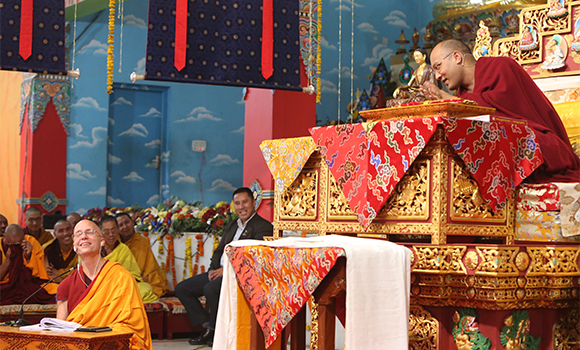
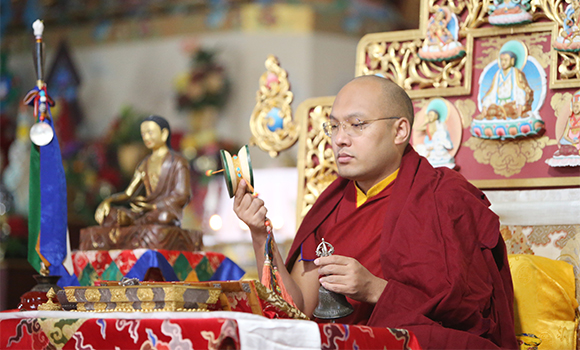

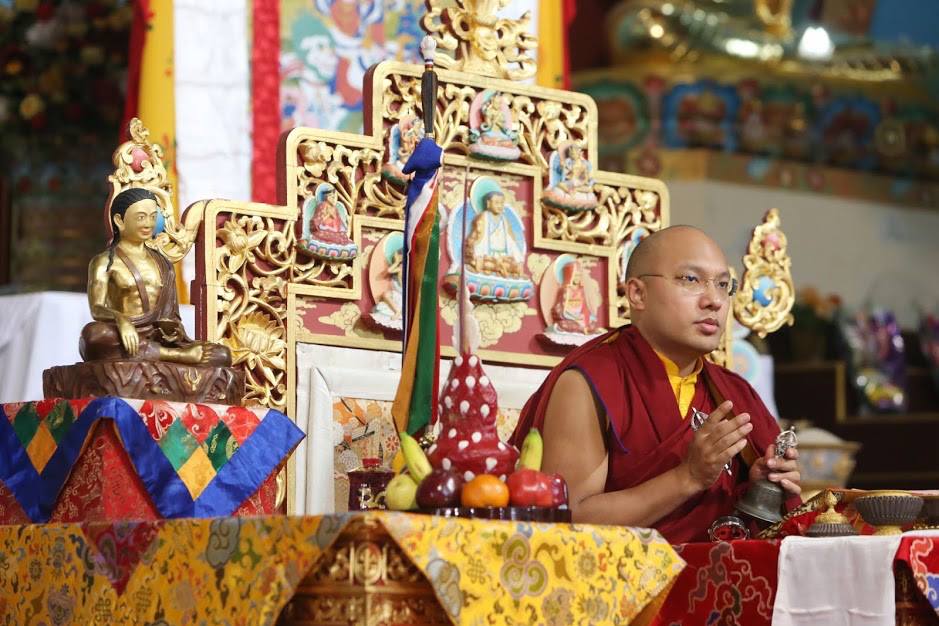 oga in the morning and in the afternoon, the offering ritual to the Five Tseringma (Long Life Sisters). In the new setting, which the Karmapa had arranged the night before, two shrines filled the central space of the shrine stage. On the right was a long, embroidered thangka of Karma Pakshi, flanked in brilliant white scarves, which brought alive the rich colors in the image of this Second Karmapa along with his yidam deity and main disciples. Two large tormas (offering sculptures) were set beneath it, and the lower one had a skull cup and butter lamps on either side. The final row held beautifully embossed gold and silver offering bowls, their generous size filled with the traditional substances.
oga in the morning and in the afternoon, the offering ritual to the Five Tseringma (Long Life Sisters). In the new setting, which the Karmapa had arranged the night before, two shrines filled the central space of the shrine stage. On the right was a long, embroidered thangka of Karma Pakshi, flanked in brilliant white scarves, which brought alive the rich colors in the image of this Second Karmapa along with his yidam deity and main disciples. Two large tormas (offering sculptures) were set beneath it, and the lower one had a skull cup and butter lamps on either side. The final row held beautifully embossed gold and silver offering bowls, their generous size filled with the traditional substances. 